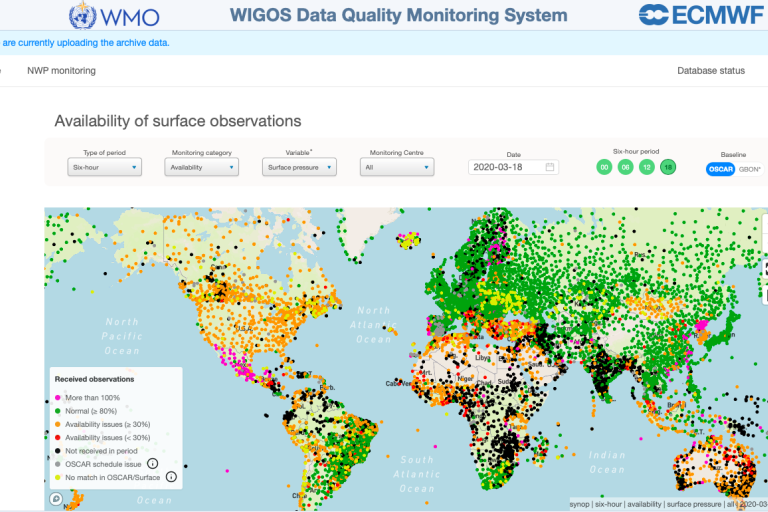New web tool monitors quality of observations
WMO and the European Centre for Medium Range Weather Forecasts (ECMWF) launched a new web-based interface on 17 March 2020 to help monitor the availability and quality of global meteorological observations within the WMO Integrated Global Observing System (WIGOS).

WMO and the European Centre for Medium Range Weather Forecasts (ECMWF) launched a new web-based interface on 17 March 2020 to help monitor the availability and quality of global meteorological observations within the WMO Integrated Global Observing System (WIGOS).
The WIGOS Data Quality Monitoring System (WDQMS) monitors the performance of the in-situ observing systems that are a key component of WIGOS.
“With the launch of the WIGOS Data Quality Monitoring System, WMO has made a very important step toward realizing its vision of a global integrated observing system covering weather, climate and related environmental applications, with up to date information about its performance made visible to the individual operators, to the users of the data and indeed to the whole world on 24/7 basis,” said Lars Peter Riishojgaard, WMO Director, Earth Systems, and the project manager for WDQMS.
WDQMS monitors the availability and quality of land-based surface and upper-air observations, based on near-real-time monitoring information provided by four participating global numerical weather prediction (NWP) centres: the German national meteorological service (DWD), ECMWF, the Japan Meteorological Agency (JMA) and the US National Centers for Environmental Prediction (NCEP).
“For the first time, this new system is able to collect 6-hourly quality monitoring reports from the four WIGOS Monitoring Centres and store the data in the WDQMS database at ECMWF,” says ECMWF scientist Cristina Prates. “The data are then aggregated and the calculated statistics compared against performance thresholds.”
A key function of WDQMS is to routinely compare the number of observations delivered from the member states all over the world with the number of observations the member states were expected to deliver. This monitoring enables WMO to take early action in case of missing data, and it will thus help ensure the flow of critical observational data needed by all countries for weather prediction and climate monitoring purposes.
The web tool gives global NWP centres an opportunity to enhance their monitoring capabilities by comparing their data coverage and quality statistics with those of other NWP centres. It also enables all national meteorological services to receive feedback in near real time on the availability, usage and quality of their observations.









